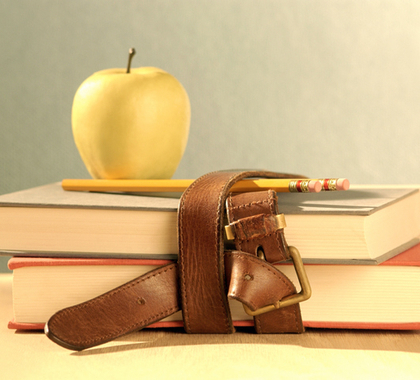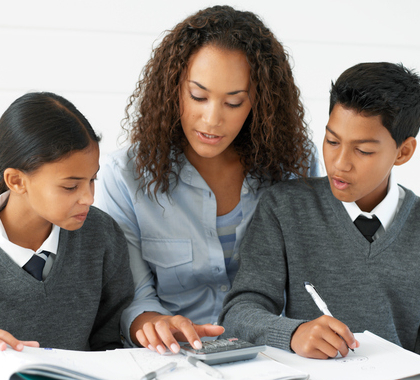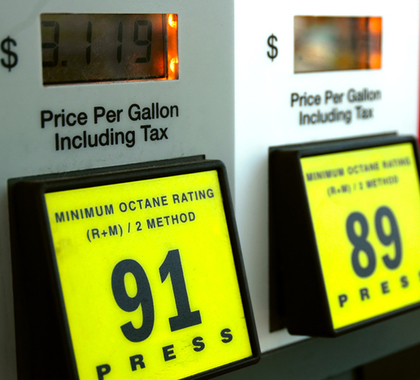The Chicago Tribune recently released “Betrayed,” a 14-part series uncovering widespread sexual assault, abuse, and harassment at Chicago Public Schools (CPS) during the past decade. The Tribune analyzed Chicago Police Department data showing 523 reports of sexual assault and abuse of students inside CPS schools from 2008 to 2017—about one report per week over the course of a decade. Reporters also had to threaten CPS with a lawsuit to get a hold of internal documents showing 430 reports of CPS employees sexual assaulting, abusing, or harassing students since 2011.
However, these numbers are not unique to CPS or Illinois. According to the U.S. Department of Education (DOE), there were 10,100 incidents of sexual assault and another 1,100 incidents of rape or attempted rape in public schools in the 2015–16 school year alone. Another DOE study estimated about 10 percent of students will experience some form of sexual misconduct by a school employee by the time they graduate high school, with 93 percent of them coming in a public school. Additionally, an investigation by the Associated Press (AP) found nearly 17,000 cases of student-on-student sexual assault in U.S. elementary and secondary schools from 2011 to 2015. According to AP, that works out to seven student-on-student sexual assaults for every one teacher-on-student assault.
Sexual abuse and assault is just part of the danger children face in public schools. Altogether, DOE found there were almost 1.1 million “serious offenses” during the 2015–16 school year on school grounds, roughly one for every 50 students that attend public schools in the United States. These offenses include more than 789,000 physical attacks or fights without weapons, 11,900 physical attacks or fights with weapons, 24,000 robberies (including 1,200 with either a weapon or a firearm), and 5,700 incidents of possession of a firearm or explosive device.
Additionally, the DOE study found during the 2015–16 school year, there were greater than 135,000 “individual allegations of harassment or bullying on the basis of sex, race, sexual orientation, disability, or religion” and more than 114,000 students disciplined for “incidents of harassment or bullying on the basis of sex, race, or disability.” Another 158,000 students were physically or mechanically restrained or placed in seclusion during the year, the large majority of these being students with disabilities.
The federal Every Student Succeeds Act (ESSA) permits students to transfer to another public school under ESSA’s Unsafe School Choice Option provision, but only if their current public school meets the state definition of a “persistently dangerous” school. Because states define unsafe schools narrowly, fewer than 50 public schools out of nearly 100,000 are labeled persistently dangerous each year.
Students should not have to wait years at a time or become victims of violent crime before their parents are allowed to transfer them to safer schools. That is why The Heartland Institute is proposing for states to create a Child Safety Account (CSA) program. CSAs are a type of education savings account (ESA) program for parents who feel, for whatever reason, their child’s school is unsafe for their child. A CSA would empower parents to transfer their children immediately to the safe schools of their choice within or beyond their resident public school districts—including public district, charter, and virtual schools—as well as private and parochial schools. CSA funds could also be used to pay for homeschooling expenses.
(The full brief on Child Safety Accounts is available here.)
Under Heartland’s CSA program, students would be eligible for a CSA account if their parents have a “reasonable apprehension” for their children’s physical or emotional safety based on the experiences of their children, including bullying, hazing, or harassment. Parents could also determine their child’s school isn’t safe after reviewing the incidents-based statistics schools would be required to report. No longer would parents have to wait years until their school meets ESSA’s too-narrow definition of “persistently dangerous” or, worse, until their child becomes the victim of some form of violent crime.
Students are made to feel unsafe in their school in a variety of ways and for multiple reasons, including physical and emotional bullying, random acts of violence, hazing, sexual harassment and abuse at the hands of peers and teachers, gang activity, harassment over food allergies or other special needs, and unsafe classroom conditions. And the advent of cyberbullying, which is likely to expand in the coming years, has added a new and pernicious twist to school safety.
The U.S. education system’s failure to protect children and provide parents with reasonable alternatives is precisely why CSA programs are so desperately needed. As things stand now, the system only effectively allows wealthier families to move their child to a safer school when they feel it is imperative. The freedom afforded to those families should be afforded to all Illinois families, as every child deserves to have the resources available to allow them to escape an unsafe school environment.
The following document provides more information about education safety accounts.
Protecting Students with Child Safety Accounts
https://heartland.org/publications-resources/publications/protecting-students-with-child-safety-accounts
In this Heartland Policy Brief, Vicki Alger, senior fellow at the Independent Women’s Forum and research fellow at the Independent Institute, and Heartland Policy Analyst Tim Benson detail the prevalence of bullying, harassment, and assault taking place in America’s public schools and the difficulties for parents in having their child moved from a school that is unsafe for them. Alger and Benson propose a Child Safety Account program, which would allow parents to immediately have their child moved to a safe school – private, parochial, or public – as soon as parents feel the public school their child is currently attending is too dangerous to their child’s physical or emotional health.
Education Savings Accounts: The Future of School Choice Has Arrived
https://heartland.org/publications-resources/publications/education-savings-accounts-the-future-of-school-choice-has-arrived
In this Heartland Policy Brief, Policy Analyst Tim Benson discusses how universal ESA programs offer the most comprehensive range of educational choices to parents; describes the six ESA programs currently in operation; and reviews possible state-level constitutional challenges to ESA programs.
A Win-Win Solution: The Empirical Evidence on School Choice (Fourth Edition)
http://www.edchoice.org/wp-content/uploads/2016/05/A-Win-Win-Solution-The-Empirical-Evidence-on-School-Choice.pdf
This paper by EdChoice details how a vast body of research shows educational choice programs improve academic outcomes for students and schools, saves taxpayers money, reduces segregation in schools, and improves students’ civic values. This edition brings together a total of 100 empirical studies examining these essential questions in one comprehensive report.
2017 Schooling in America: Public Opinion on K–12 Education, Parent Experiences, School Choice, and the Role of the Federal Government
https://www.edchoice.org/wp-content/uploads/2017/11/2017-Schooling-In-America-by-Paul-DiPerna-Michael-Shaw-and-Andrew-D-Catt.pdf
This annual EdChoice survey, conducted in partnership with Braun Research, Inc., measures public opinion and awareness on a range of K–12 education topics, including parents’ schooling preferences, educational choice policies, and the federal government’s role in education. The survey also records response levels, differences, and intensities for citizens located across the country and in a variety of demographic groups.
Competition: For the Children
https://heartland.org/publications-resources/publications/competition-for-the-children
This study from the Texas Public Policy Foundation claims universal school choice results in higher test scores for students remaining in traditional public schools and improved high school graduation rates.
The Public Benefit of Private Schooling: Test Scores Rise When There Is More of It
https://object.cato.org/sites/cato.org/files/pubs/pdf/pa830.pdf
This Policy Analysis from the Cato Institute examines the effect increased access to private schooling has had on international student test scores in 52 countries. The Cato researchers found that a 1 percentage point increase in the share of private school enrollment would lead to moderate increases in students’ math, reading, and science achievement.
The School Voucher Audit: Do Publicly Funded Private School Choice Programs Save Money?
http://www.edchoice.org/wp-content/uploads/2015/07/The-School-Voucher-Audit-Do-Publicly-Funded-Private-School-Choice-Programs-Save-Money.pdf
This report by Jeff Spalding of EdChoice provides a program-for-program breakdown of school voucher costs and savings. On the whole, Spalding says these programs have provided a cumulative savings of $1.3 billion since 2007, or roughly $3,400 per pupil.
Nothing in this Research & Commentary is intended to influence the passage of legislation, and it does not necessarily represent the views of The Heartland Institute. For further information on this subject, visit School Reform News, The Heartland Institute’s website, and PolicyBot, Heartland’s free online research database.
The Heartland Institute can send an expert to your state to testify or brief your caucus; host an event in your state; or send you further information on a topic. Please don’t hesitate to contact us if we can be of assistance! If you have any questions or comments, contact John Nothdurft, Heartland’s director of government relations, at [email protected] or 312/377-4000.




